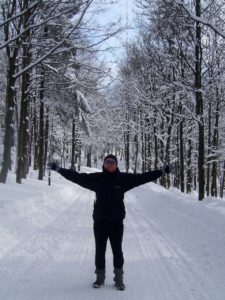
In 2007, the National Institute on Drug Use (NIDA) reported that approximately 60% of substance abusers have a co-occurring mental health disorder. Fall and winter can be a stressful time environmentally and situationally for sufferers. With darker months, individuals with seasonal depression are increased risks, some of which are boredom due to limited outside activity because to inclement weather.
Increase negative thoughts or memories of alcohol consumption and or substance use during colder months can be a trigger, or desires to boost energy and/or reduce pain that can occur with shorter daylight hours and colder temperatures in winter.
Understanding Seasonal Affective Disorder
With the fall and winter come holidays which can affect recovery and SAD in various ways. Holidays typically involve ‘partying’ with work events, or social events that include bars or alcohol consumption and pressure to use drugs. Family events can increase stress and tension and also be triggering for family memories or interactions which can trigger intense emotions.
Seasonal Affective Disorder (SAD) is a type of depressive disorder that is trigged by the changing of seasons. Symptoms can occur at any period during the seasonal change and most people with SAD report that the onset of winter is typically the most common trigger. There are various reasons for SAD, some of which are lack of sunlight that can lead to a drop in serotonin levels which is an important chemical responsible for managing mood.
Melatonin can also be affected by seasonal change which also helps regulate mood. The switch from longer to shorter daylight hours can affect one’s biological clock which can lead to difficulty with sleeping and therefore can intensify depressive symptoms. There may also be a genetic component to the development of SAD. Symptoms of SAD include drop in energy levels, depression, and potential weight gain, difficulty with concentration, increased anxiety, and isolation.
 Patients with SAD often struggle with interpersonal relationships, maintaining positive, health friendships, maintain work and daily life tasks, and reduced self-care and hygiene. The mood shifts and behavioral changes can disrupt mental health and trigger cravings. Related risks include social withdrawal, suicidal thoughts and substance abuse. The depression and anxiety coincide with other risk factors associated with the holidays.
Patients with SAD often struggle with interpersonal relationships, maintaining positive, health friendships, maintain work and daily life tasks, and reduced self-care and hygiene. The mood shifts and behavioral changes can disrupt mental health and trigger cravings. Related risks include social withdrawal, suicidal thoughts and substance abuse. The depression and anxiety coincide with other risk factors associated with the holidays.
Connection Between Depression and Substance Abuse
The National Institute on Mental Health (NIMH) reports that alcohol abuse is a common issue amount patients who are also diagnosed with a depressive disorder. They also found that more than 20% of patients diagnosed with SAD also had substance abuse issues. There is a strong connection between substance use and depression. Alcohol is a depressant that affects the central nervous system and initially acts as a stimulant, but intensifies feelings of lethargy, drowsiness, and depression. Substance use can also impair judgement, inhibition and increases risk of suicide. Alcohol use can worsen SAD by aggravating the symptoms of depression.
Substance use can impair motivation for treatment, and the effectiveness of therapeutic interventions. In 2013 the Journal of Clinical Psychiatry found that SAD and substance use share specific triggers. Possible connections between these two disorders are the parts of the brain that are affected for both substance and depression. Substance use and depression affect areas in the brain that handles stress. Developmental issues is a third factor that is influenced by early onset of mental health issues and/or addiction. Environmental factors can play a role in the development of substance use such as trauma or neglect.
Navigating the Holidays
Those trying to manage the holidays should be prepared for increased risk of triggers so to be prepared and respond. Being aware of seasonal changes and upcoming holidays can increase risk of relapse and worsening symptoms. Gain a support system of trusted friends and family to help with accountability and support. Have a backup plan for events that are alcohol free.
 Utilize available treatment team and support group to help when planning out holiday events and activities. Work to develop a relapse prevention plan that prepares for cravings, conflict, boredom, and stress. Self-care activities such as a set bedtime and wake routine, eating a balanced and nutrition’s meal plan, getting regular exercise, following treatment recommendations by psychiatrist/doctor and therapist. SAD can be a dangerous trigger for those in recovery from substance abuse.
Utilize available treatment team and support group to help when planning out holiday events and activities. Work to develop a relapse prevention plan that prepares for cravings, conflict, boredom, and stress. Self-care activities such as a set bedtime and wake routine, eating a balanced and nutrition’s meal plan, getting regular exercise, following treatment recommendations by psychiatrist/doctor and therapist. SAD can be a dangerous trigger for those in recovery from substance abuse.
SAD can be a barrier to rebuilding a life in recovery that is free of substance due to increase depressive symptoms. Being able to stay in contact with a person’s treatment team and seek help is key in keeping symptoms managed, especially during the holidays. Remembering to prepare for potential triggers, keep support systems available, and keep in line with self-care can help individuals manage the increased stress and emotional triggers that come with holiday events and activities.
Community Discussion - Share your thoughts here!
What has helped you the most during the holiday season to manage depressive and/or substance use symptoms and triggers?
 About the Author: Libby Lyons, MSW, LCSW, CEDS, is a Certified Eating Disorder Specialist (CEDS) who works with individuals and families in the area of eating disorders. Mrs. Lyons works in the metropolitan St. Louis area and has been practicing in the field for 11 years. Libby is also trained in Family Based Therapy (FBT) to work with children-young adults to treat eating disorders. Mrs. Lyons has prior experience working with the United States Air Force, Saint Louis University, Operating Officer of a Private Practice, and currently works with both Saint Louis Behavioral Medicine Institute within their Eating Disorders Program and Fontbonne University
About the Author: Libby Lyons, MSW, LCSW, CEDS, is a Certified Eating Disorder Specialist (CEDS) who works with individuals and families in the area of eating disorders. Mrs. Lyons works in the metropolitan St. Louis area and has been practicing in the field for 11 years. Libby is also trained in Family Based Therapy (FBT) to work with children-young adults to treat eating disorders. Mrs. Lyons has prior experience working with the United States Air Force, Saint Louis University, Operating Officer of a Private Practice, and currently works with both Saint Louis Behavioral Medicine Institute within their Eating Disorders Program and Fontbonne University
References:
[1]: Retrieved from www.dualdiagnosis.org 2016
[2]: Retrieved from www.americanaddictioncenters.org 2016
[3]: Retrieved from www.addictionhelpcenter.com 2016
[4]: Retrieved from www.alcoholrehab.com 2016
[5]: Retrieved from www.aetna.com 2016
The opinions and views of our guest contributors are shared to provide a broad perspective of addictions. These are not necessarily the views of Addiction Hope, but an effort to offer discussion of various issues by different concerned individuals.
We at Addiction Hope understand that addictions result from a combination of environmental and genetic factors. If you or a loved one are suffering from an addiction, please know that there is hope for you, and seek immediate professional help.
Last Updated & Reviewed By: Jacquelyn Ekern, MS, LPC on November 15, 2016
Published on AddictionHope.com
